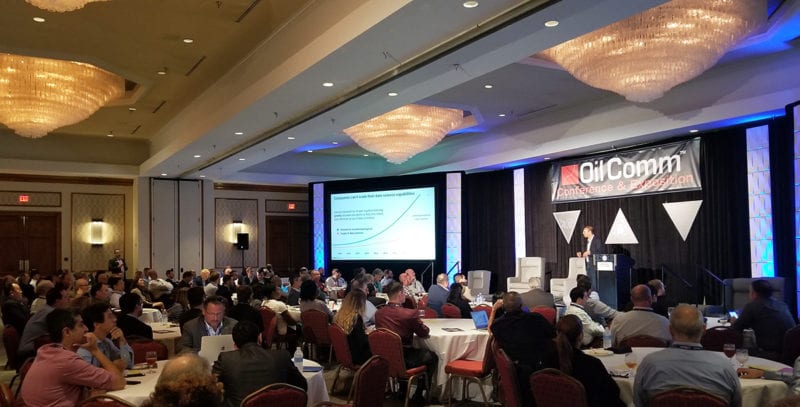
Invatare CEO Trond Ellefsen (Photo courtesy of TU, Norway)
According to the former CIO and Digital Strategy Lead for one of the world's largest multinational energy companies, digital transformation represents both the top opportunity and business risk for the oil and gas industry in 2020. Why the double-edged sword? Trond Ellefsen, CEO of Invatare and formerly of Statoil (now Equinor), explains that the risk comes from energy executives' lack of any clear vision on digital transformation strategies.
"The oil and gas industry's corporate-wide business architecture has evolved, for the most, by coincidence," Ellefsen told attendees at the October OilComm conference in Houston, Texas. "Current investments in digital technologies, such as Artificial Intelligence (AI), data analytics, and machine-learning do not seem to be delivering as expected. Projects are not gaining traction, not generating the expected ROI, and not on schedule. Teamwork is not improving. Many companies are doing smart things pointed at small challenges inside existing siloes without considering the value hidden across the value-chain."
Ellefsen, a Norwegian-born, Houston native, who in addition to his role at Invatare, serves in multiple board roles, including the Rice University Brown School of Engineering EPMP advisory board, delivered one of the most well-received keynotes at the two-day oil and gas technology conference. OilComm's featured speakers included executives from SES, Marlink, BP, Noble Energy, Dell, and appearances by U.S. Senator Ted Cruz (R-TX) and U.S. Congresswoman Lizzie Fletcher (D-TX).
Ellefsen's presentation kicked off with a stern warning that 90 percent of oil and gas operators are still not following best digital transformation practices, and quickly transitioned to guidance on how the industry can reframe its legacy thinking on new technologies.
"I propose a new operating model for oil and gas that focuses on coherent action across the value chain. It starts with accepting the fact that you cannot continue to invest in the past," Ellefsen said. "Move your investments to open digital platform concepts, open architectures, and digital projects with high value, while being obsessed about horizon turbulence. Spend year one creating a vision and identifying all the risks. Dramatically accelerate the vision as early as year two, by experimenting with frontier technologies, sandboxing entire bus concepts, and driving a deep, cultural change."

OilComm attendees in Houston for the 2019 event.
The digital oilfield transformation as a cultural change concept is anything but new to the energy industry. Before the oil price drop in 2015, the cultural resistance was two-fold: executives unwilling to invest in networked technologies; and veteran field crew refusing to learn how to implement new digital tools and being unable to train or mentor their successors. The environment has changed somewhat in the last few years. The workforce is getting younger and much more tech-savvy. And, executives are investing in big data and automation. Ellefsen's argument, however, is that the spending strategies haven't evolved.
"Many companies are making good advances, but in silos," said Ellefsen."For example, The Argos project with Total is aiming at assisting humans in harsh environments. Robotic Drill floor solutions have been developed by multiple companies since 2013, and have now reached maturity. Even offshore production rig automation had reached some early level of maturity, until the oil price drop a few years ago. We now stand at the edge of 2020, and the existing business foundations are just not adequate or constructed for the data-intensive, hyperconnected, and cross-collaborative world that is fueling the future of our businesses and our lives."
